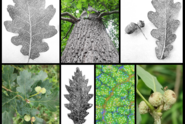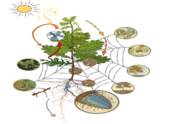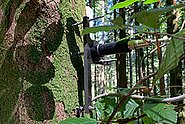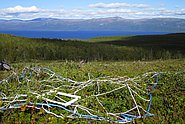Climate change exposes ecosystems to strong and rapid changes in their environmental boundary conditions mainly due to the altered temperature and precipitation patterns. It is still poorly understood how fast interlinked ecosystem processes respond to altered environmental conditions, if these responses occur gradually or suddenly when thresholds are exceeded, and if the patterns of the responses will reach a stable state. We conducted an irrigation experiment in the Pfynwald, Switzerland from 2003–2018. A naturally dry Scots pine (Pinus sylvestris L.) forest was irrigated with amounts that doubled natural precipitation, thus releasing the forest stand from water limitation. The aim of this study was to provide a quantitative understanding on how different traits and functions of individual trees and the whole ecosystem responded to increased water availability, and how the patterns and magnitudes of these responses developed over time. We found that the response magnitude, the temporal trajectory of responses, and the length of initial lag period prior to significant response largely varied across traits. We detected rapid and stronger responses from aboveground tree traits (e.g., tree-ring width, needle length, and crown transparency) compared to belowground tree traits (e.g., fine-root biomass). The altered aboveground traits during the initial years of irrigation increased the water demand and trees adjusted by increasing root biomass during the later years of irrigation, resulting in an increased survival rate of Scots pine trees in irrigated plots. The irrigation also stimulated ecosystem-level foliar decomposition rate, fungal fruit body biomass, and regeneration abundances of broadleaved tree species. However, irrigation did not promote the regeneration of Scots pine trees, which are reported to be vulnerable to extreme droughts. Our results provide extensive evidence that tree- and ecosystem-level responses were pervasive across a number of traits on long-term temporal scales. However, after reaching a peak, the magnitude of these responses either decreased or reached a new stable state, providing important insights into how resource alterations could change the system functioning and its boundary conditions.
Siehe DOISiehe Institutional Repository DORA







